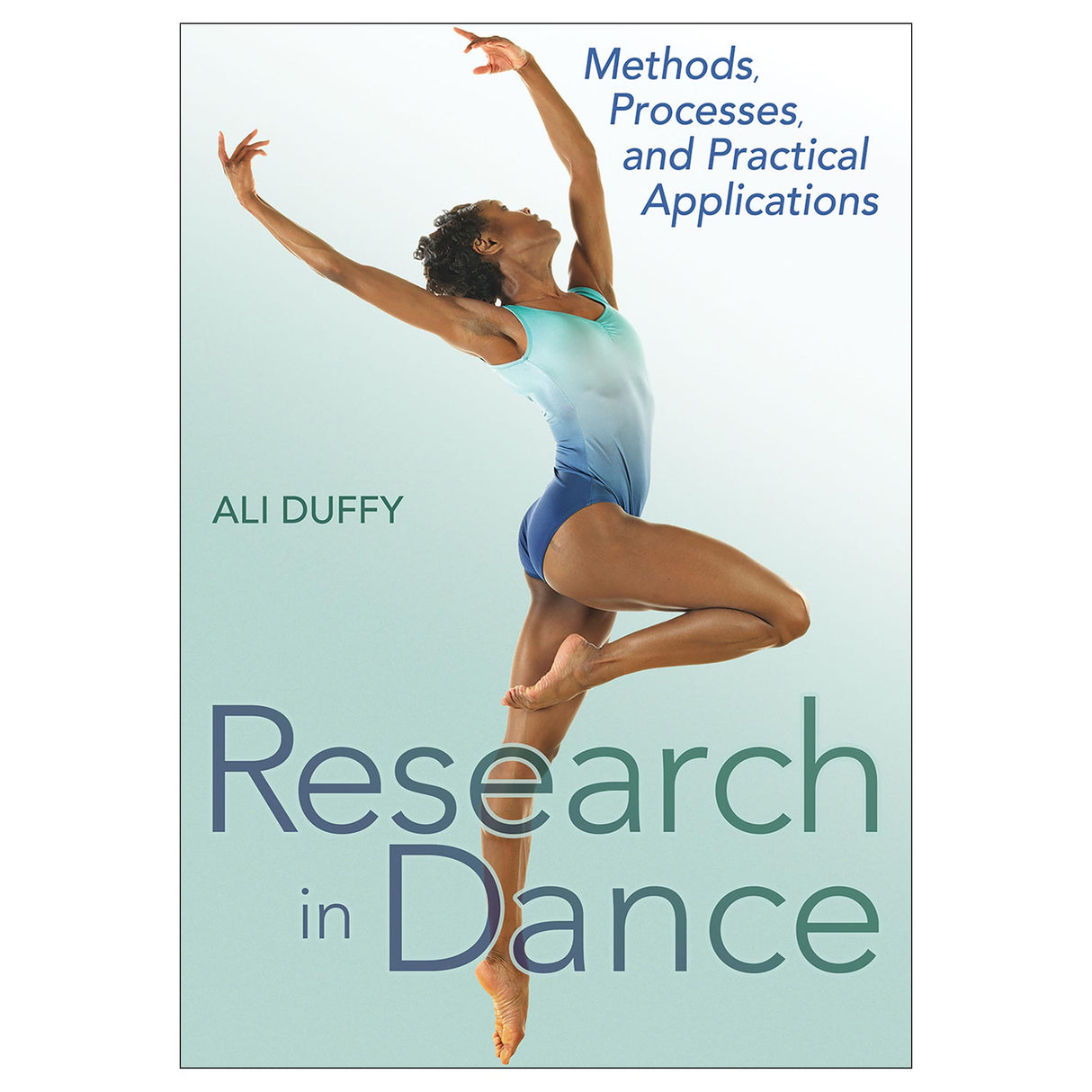Research in Dance
Methods, Processes, and Practical Applications
Author: Ali Duffy
$54.00 USD
A comprehensive guide to conducting, presenting, and publishing dance research.
Dance research is an ever-growing field, with many opportunities for dancers to shed light on the sophisticated ways dance affects and changes lives. Research in Dance offers new and insightful information for dance researchers at all stages of their learning and inquiry. In addition to serving as a foundational text for new researchers, it brings forward innovative concepts and strategies intended for those dance researchers already experienced in qualitative or arts-based inquiry.
There are few resources that delve into the specific purposes, methods, and processes of research in dance. As the first of its kind, this text addresses topics often overlooked by other resources:
- Arts-based research approaches
- Socially engaged research
- Interdisciplinary research methods
- Professional paths in dance research
- Grant writing for research support
Dance researchers have many avenues to consider as they embark on sharing their discoveries. More than 50 academic journals and popular magazines focused on dance are available in print and online. There are many book publishers, stage producers, festivals, academic and professional conferences, and online platforms that also support dance research. Research in Dance explores philosophical frameworks and methodological approaches to assist the reader in the sharing of research. The text lays out practical, step-by-step guidance on selecting the best platform in which to present or publish a research outcome, and it offers guidance on preparing and submitting manuscripts and proposals.
Research in Dance aims to meet readers wherever they are in their research journey and to address the needs of people working, studying, or researching in academic, nonprofit, business, and studio settings as well as in company dance and arts programs.
Audience
Undergraduate- and graduate-level students in dance research courses; professionals working on a dance research project, writing a grant, or creating an artistic work.
Introduction
Purpose and Brief History of Dance Research
How Dance Research Benefits Individuals, Communities, and the Global Society
How Dance Researchers Learn to Conduct Research
Grants and Fundraising
Chapter 1. Preparing to Conduct Research: Identifying a Topic, Purpose, Questions, and Plan
Leveraging Existing Interests and Knowledge Toward Research Project Development
Choosing a Research Topic or Idea
Developing a Research Purpose Statement or Vision
Developing an Argument or Thesis Statement
Research Questions
Annotated Bibliography to Literature Review
Citing Sources
Ensuring Ethical Research
Conclusion
Chapter 2. Identifying and Positioning the Researcher
Philosophical Assumptions
Interpretive Frameworks
Biases, Assumptions, and Gaps in Understanding
Inclusive Research
Developing Effective, Ethical Relationships With Research Participants
Conclusion
Chapter 3. Research Approaches in Dance
Qualitative Research
Quantitative Research
Arts Practice Research and Dance-Based Methods
Mixed Methodologies
Interdisciplinary Approaches
Practical and Applied Research
Conclusion
Chapter 4. Research Processes and Protocols
Qualitative Research Processes
Quantitative Research Processes
Arts-Based Methods and Processes
Applied Research
Community-Engaged Research
Conclusion
Chapter 5. Sharing Your Research
Qualitative and Quantitative Research: Articles, Books, Presentations, and Events
Arts-Based Research: Performances, Festivals, Fellowships, and Residencies
Marketing Yourself as a Researcher
Conclusion
Chapter 6. Funding Research in Dance
What Kinds of Funding Exist to Support Dance Research?
Searching for Funding Opportunities
Adapting a Project Idea to Be Competitive for Funding
Developing a Project Budget
Submitting a Funding Application
Dealing With Rejection
Managing Funds
Conclusion
Chapter 7. Field Notes From Dance Researchers
Why Dance Research Is Important: Beneficiaries and Contributions to Knowledge
Angela Pickard
Nonexperimental Research Design and Ethical Decision-Making in Dance
Doug Risner
A Solitary Turn
Ann Dils
Notes on Becoming a Dance Education Researcher
Karen Schupp
Sound and Movement: A Collaborative Study Between Dance and Linguistics
Tanya Calamoneri and Cynthia Clopper
The Value of Asking Questions: Dancers as Researchers and Why Dance Research Matters
Merry Lynn Morris
Dancing Multiple Ways of Knowing: Thoughts on Interdisciplinary Collaboration Between Dance and Science
Aoife McGrath
Dipping a Toe Into Health Science
Johanna Kirk
We Regret to Inform You: Rethinking Bias in Academic Rejection
Crystal U. Davis
Conclusion
Chapter 8. Leveraging Your Research and Imagining the Future Field
Leveraging Existing Projects
Advancing Your Research Agenda in Dance
How to Stay Curious and Active
A Portrait of Dance Research in the Future
Conclusion





